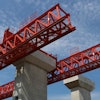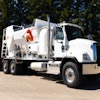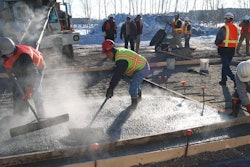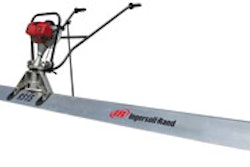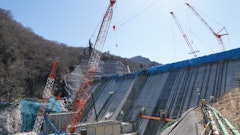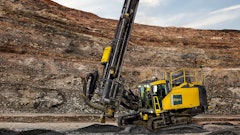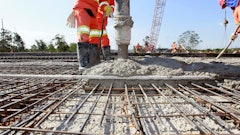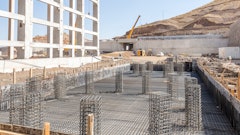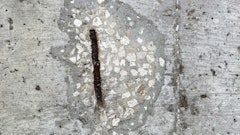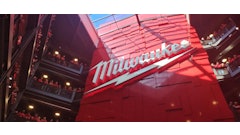By Joseph Lyman, executive director, Insulating Concrete Form Association
Llittle less than 10 years ago, insulating concrete forms (ICFs) were known as a relatively obscure building system used mostly for foundations. However, ICF construction has grown quietly over the past decade to become one of the fastest growing building systems in North America. It is certain that in the years to come, ICFs will receive a great deal more attention and become a building system of choice for several market segments.
Market share
ICFs have seen tremendous growth over the past 10 years. In 1996, ICFA estimates the total square footage of ICFs used in North America was approximately 17,400,000 sq. ft. Since 1996, ICF market share has increased almost sixfold with approximately 104,000,000 sq. ft. used in 2006. Despite the dramatic growth in the first few years, industry gains have slowed to roughly 20 percent per year in the past several years. However, the growth in the ICF market is just part of the story. Understanding shifts in markets and market segments are equally as important so that the industry can understand the direction the market is moving.
In 1996, it is estimated that more than 90 percent of all ICFs were used in the residential market. Also, approximately 83 percent of ICFs in the residential market were used in below-grade applications. Fast-forward to 2006 where ICFA estimates that approximately 52 percent of all ICFs used in the residential market were used in above-grade applications. Given these numbers, ICFA estimates the majority of those homeowners building foundations using ICFs in 2006 also decided to use ICFs for their above-grade walls.
"People have decided to upgrade their wall systems and go to the roofline using ICFs," says Jim Niehoff, residential promotion manager for the Portland Cement Association. "The price of energy, concerns about natural disasters and a desire to improve the overall quality of the home have pushed people to consider a better building system."
The commercial market is equally interesting. In 1996, ICFA estimates that less than 10 percent of ICF square footage was used in the commercial market. However, this percentage has grown to over 30 percent in 2006. ICFs are now becoming widely used for a full range of market segments including the theater, hospitality/resort and big box retail segment. Theaters are among the hottest, as numerous theater megaplexes were built using ICFs in 2006. It isn't hard to believe within the next few years that ICFs will become the building material of choice for many market segments, especially the theater market.
Jim Dorr, vice president of national accounts for Eco-Block, LLC, believes ICFs have a competitive edge in the theater market, saying, "ICFs are being chosen to reduce noise and improve the construction schedule. ICFs are faster to build and better than alternative construction methods."
What does the future hold?
Although ICFs continue to gain awareness in the marketplace and overcome resistance to using a relatively new product, the ICF industry's biggest hurdle remains creating a subtrade to install ICFs. Unfortunately, the product's appeal has outstripped the industry's ability to install all the ICF projects that clients and homeowners are interested in having built. Pressured by time constraints and a lack of competitive bids from ICF installers in certain areas of North America, individuals are often forced to substitute ICFs with an alternative wall system.
Pieter VanderWerf, president of Building Works, Inc. and a longtime ICF industry insider, believes training and experience is key to helping the industry build a subtrade that will overcome these issues. He says, "The creation of a true ICF installer base will help prevent the ICF industry from turning away business while increasing the competitive edge needed to gain market share. Increasing the number of ICF installers and increasing their jobsite efficiency will help to dramatically improve the installed price of ICFs."
Leonardo da Vinci once said, "Simplicity is the ultimate sophistication." The construction industry should take notice to what the famous designer once said. For years, there has been an overwhelming need in the construction industry to simplify building systems and create more user-friendly building materials due to the lack of skilled labor in the market. This is why the future looks so bright for the ICF industry. Although technologically advanced, an ICF wall system is simple in its design. With ICFs, a single crew can reduce the need for a separate structural, insulation and noise abatement subcontractor for the same job all while improving construction schedules.
Above all, proper training is an important component to ICF installations. Many ICF companies, as well as the ICFA, sponsor ICF installation courses throughout the United States and Canada to train contractors on industry-accepted methods for installing and consolidating concrete in ICFs. This more than anything will help an ICF project succeed. Please check with ICFA or ICFA Primary members to learn how you can increase your level of expertise by attending one of these courses.
With ICFs accepted in the model building codes, field proven throughout North America and currently being used by some of the world's largest clients, design firms and contractors, ICFs are ready to make the next big leap.
Joseph Lyman is the executive director of the Insulating Concrete Form Association. The Insulating Concrete Form Association (ICFA) is the trade association representing the business and political interests of the insulating concrete form industry, representing over 470 member firms through ICF promotion, codes and standards, research, partnering and education. Founded in 1994, the ICFA is located in suburban Chicago, Ill.
| RELATED ONLINE ARTICLES |
| Ten ICF construction tips from the ICF Association |

